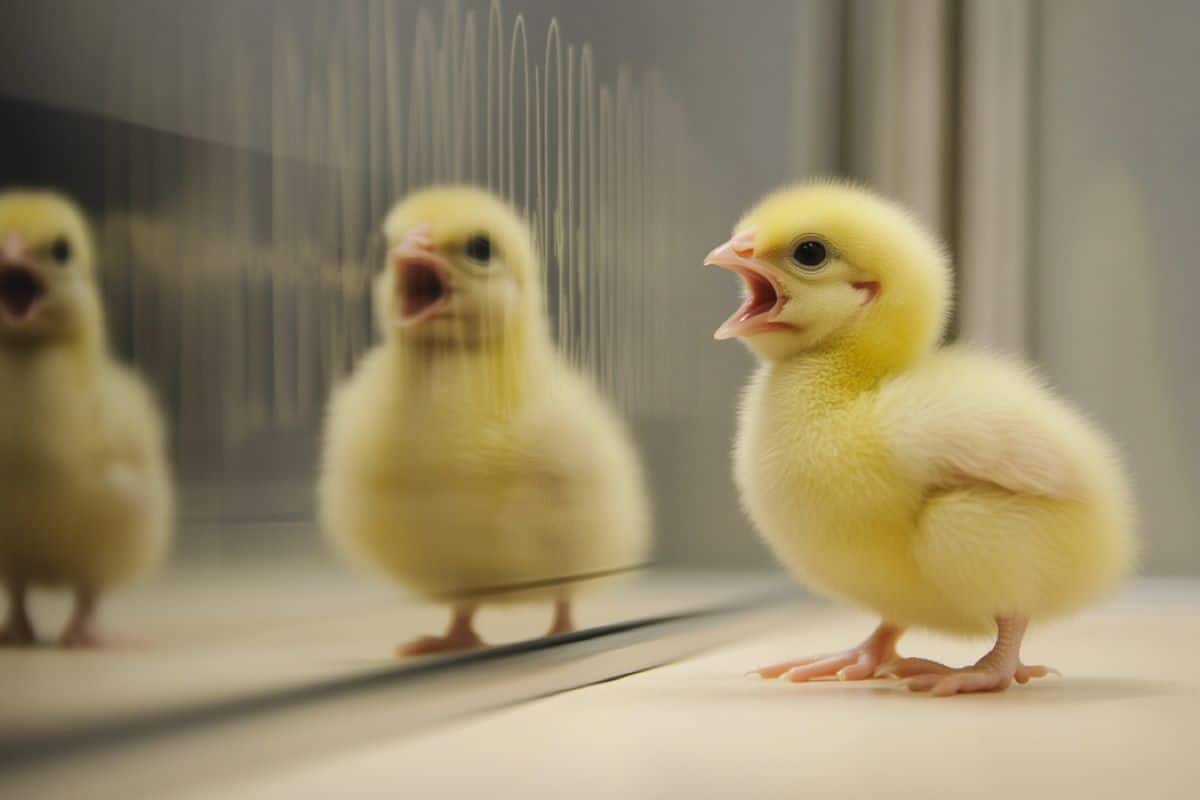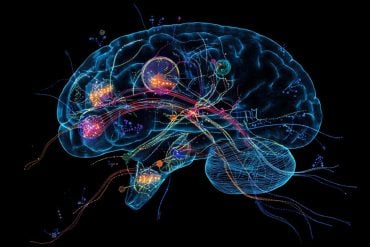Summary: Researchers have developed a way to measure stress in baby chicks using vocalizations, offering new insights into animal emotions. The study found that chicks alone produced higher-pitched, louder calls, indicating anxiety-like states, while calmer chicks showed more relaxed vocal patterns.
These findings could lead to more humane practices in the poultry industry and enhance testing of anxiety medications for humans. The study highlights the importance of considering animal emotions for improving welfare standards across livestock industries.
Key Facts:
- Chick vocalizations reveal anxiety-like states, helping monitor animal welfare.
- Vocal stress detection could replace invasive methods like hormone blood tests.
- Insights may improve both poultry industry practices and human anxiety research.
Source: University of Mississippi
Understanding animal emotions has been a long-running question at the forefront of welfare studies, but a University of Mississippi professor’s work may hold the key to decoding the chatter.
The answer involves two baby chickens and a mirror.
Kenneth Sufka, professor of psychology and pharmacology, partnered with a team of animal welfare researchers in the United Kingdom to study avian emotions through the common domestic chick’s peeps and whistles.

Their research was recently published in Applied Behaviour Science.
Their findings could improve animal welfare across the poultry production industry. It could also improve testing for medications to treat depression and anxiety in people.
“Is there a noninvasive way that can capture in freely moving animals a measure of stress states?” he said. “That was the question we wanted to address in this chick study, looking at the calling or the vocalizations that are emitted, but in a way more sophisticated way than I have ever done.”
To conduct the study, the UK researchers expanded on previous results from Dr. Sufka’s lab. The experimental set up involved complex acoustic equipment in a secluded room. In one box, they placed a chick, and in another, they placed a chick with a mirror.
The chicken that can see its reflection believes it is not alone, and its calls represent a relatively calm chick, that isn’t too stressed. The chick that is alone, however, begins to voice loud, higher pitched sounds that the researchers believe could indicate an anxiety-like state. The acoustic data the researchers gathered measured how the quality of the chick’s vocalizations changed, and what that meant for their stress level.
Being able to detect stress could open the doorway to more humane, responsive practices in the meat and egg industry.
“In production facilities, in commercial growing facilities across the board – be it cattle, swine or avian models like chickens – there’s a real concern about welfare,” he said. “Is this a worthwhile thing, to be thinking about using acoustics to monitor animal welfare in these production facilities? I think so.”
While researchers – and farmers – have long known that a loud chick is a distressed chick, the knowledge never went much deeper than that, said Sarah Collins, coauthor and associate professor of animal behavior at the University of Plymouth.
“This is more evidence of animal sentience – the ability to experience feelings,” she said. “We have known for a while that chick distress calls mean they are stressed, but knowing we can tell how stressed means we can assess welfare more precisely.”
The study also presents a noninvasive, comparatively inexpensive way to study anxiety-like states in animals. In previous models, the way to measure an animal’s stress levels included capturing it, withdrawing blood and measuring levels of corticosterone, a stress hormone.
“That itself is stressful – to capture, restrain, collect, release,” Sufka said. “This, we think, is a better way.”
Medications intended for humans often must go through chick, rat and primate studies before any testing on human subjects. But since chicks are often used as an early precursor to human studies, understanding their emotions could improve studies on anxiety and depression medication.
Like many humans, chicks are often resistant to many common depression medications, making them a prime subject for alternative treatments. But if researchers cannot prove that the chick first has anxiety-like symptoms, they cannot show that a medication improves that state.
“To claim that an anti-anxiety drug is alleviating an anxiety-like state, this chick or mouse or rat has to have an anxiety state similar to yours,” Sufka said. “The behavior (of an animal in an anxiety-like state) is totally different, but it’s behavior in the context of what that animal does.
“If I make an argument that I’ve got a drug that reduces that state, that would necessitate in a validation argument that animals have to have emotional states.”
But the research also points toward an answer to an older, more complex question: What rights do animals have? The long-held answer is that animals do not have the same emotional capabilities as humans, and therefore have fewer needs and wants.
“My argument is that all of the work that we have done to-date shows the similarities between this avian model and human anxiety and depressive states makes a very strong argument that these animals do have negative emotional states,” Sufka said.
“And if that’s true, then ethically it follows that we are absolutely obligated to be worried about animal welfare and provide for the best living conditions possible.”
About this emotion and animal psychology research news
Author: Clara Turnage
Source: University of Mississippi
Contact: Clara Turnage – University of Mississippi
Image: The image is credited to Neuroscience News
Original Research: Open access.
“Do I sound anxious? Emotional arousal is linked to changes in vocalisations in domestic chicks (Gallus gallus dom.)” by Kenneth Sufka et al. Applied Animal Behavior Science
Abstract
Do I sound anxious? Emotional arousal is linked to changes in vocalisations in domestic chicks (Gallus gallus dom.)
A major goal in animal welfare science is the development of methods that quantify or ‘read-out’ current affective states in freely behaving animals.
In mammalian models, changes in acoustic parameters within vocalisations have been linked to differences in emotional arousal, although there are very few studies showing changes in vocalisations that act as indicators of valence (positive or negative affect).
Currently, there are very few studies on vocal indicators of emotion in birds.
To determine the link between acoustic parameters within vocalisations and emotion in domestic chicks (Gallus gallus dom.), we used a well-validated paradigm that purports to elicit two distinct, negative emotional states: anxiety and depression.
In this paradigm, chicks in social isolation initially show high rates of distress calls (anxiety-like phase: high arousal/negative affect) that decrease over the next 20–30 minutes to a depression-like phase (low arousal/negative affect).
We analysed acoustic parameters of distress vocalisations from Legbar chicks (4–7 days old) that were placed in social isolation for 30 minutes, either with or without a mirror (Isolated: n=18; Mirror: n=16), (a mirror is known to reduce the negative behavioural and physiological indicators of isolation).
Chicks in the Isolated condition produced louder calls, of a higher frequency, and calls were individually longer, and more ‘degraded’ (higher entropy and lower harmonics-to-noise ratio) compared to the Mirror condition.
However, the call rate did not drop below 50 % of the initial rate in either condition, indicating the chicks in this study did not reach the criteria for the depression-like phase of the paradigm.
To investigate further we analysed vocalisations at times during a trial when calls were at a high rate per minute (indicating a higher level of emotional arousal at that point in time) and we found those vocalisations were louder, more ‘degraded’, longer and higher in frequency across both conditions.
These results are consistent with findings across several species of mammal, indicating that changes in emotional arousal in negatively valanced situations give rise to consistent changes in vocal parameters across a wide range of species.
Indeed, further work could look to see if the same links are found in groups such as chelonians, crocodilians and geckos, as their vocal production mechanisms share some similarities.
There could also be scope to use these changes to automatically detect shifts in emotion in captive animals.






